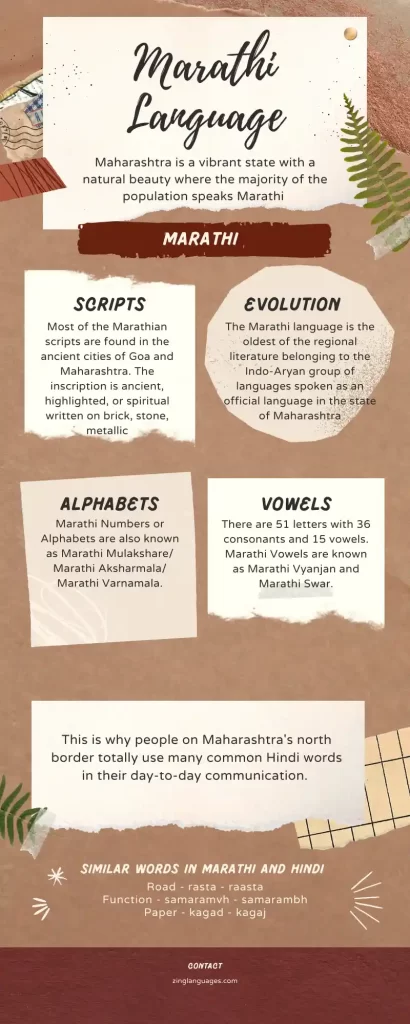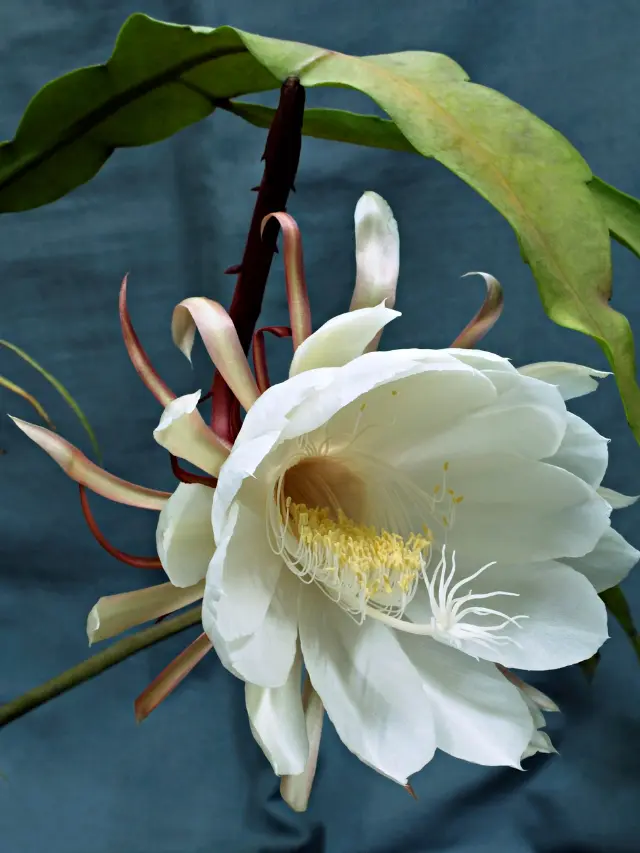Maharashtra is a vibrant state with a natural beauty where the majority of the population speaks Marathi as a local language. Cosmopolitan cities like Mumbai and Pune speak English and Hindi along with Marathi. Few others speak Gujarati and Urdu as well. This makes the tone of the Marathi language change across different regions.
Among the official languages in India, Marathi is included. There are about 8,30,26,680 Marathi speakers as per the 2011 census with an increase of 6.86% from 4,17,65,190 Marathi speakers in the year 2001.
It is said to have derived from the Maharashtri Prakrit. Certain changes have led to apabhrasa language known as Marathi which is alike to the re-Sanskritized version of Maharashtri Apabhrasa. In the later days, the influence of languages like Persian and Urdu made the Marathi language similar to the Hindi language.
Marathi Scripts
Most of the Marathian scripts are found in the ancient cities of Goa and Maharashtra. The inscription is ancient, highlighted, or spiritual written on brick, stone, metallic, or other solid surfaces. Also, the researchers have found a 705-year-old inscription belonging to the Ramdevrai Yadav of the Yadav dynasty near Pune at Talegaon Dhamdhere.
The old scripts of Marathi used longer sentences that spoke about the history of the country, mostly providing information on culture, politics, economics, etc during the ancient times.
Of all the findings, Devanagiri became Marathi’s sole official script in 1964 carrying more prestige and cachet which was preferred for manuscripts and literature, especially in Sanskritized forms with an exact pronunciation where Modi was no longer acknowledged.
Evolution and Expansion of Marathi Language
The Marathi language is the oldest of the regional literature belonging to the Indo-Aryan group of languages spoken as an official language in the state of Maharashtra and mainly by the people in western India since 1966. It had other names such as Marhatti, Mahratti, Maharashtri, etc.
It evolved from Sanskrit, eventually derived from Prakrit and Apabhramsha, and is projected to be more than 1300 years old. The grammar and syntax were similar to that of Pali and Prakrit.
Generally, the Marathi language is lengthy because it is related to Eastern Hindi. It is also termed to have the richest saint literature compared to all other Indian languages. Due to modernization the language changed gradually and has become simple to use.
The writings of the inscriptions in the Marathi text were first written in the 11th century using stones and copper plates. From the 13th to the mid-20th century, the writings were in the Modi alphabet and since 1950, it has been written using the Devanagiri alphabets.
The dialects of Marathi are 42 in a total of which the dialects used in Tamil Nadu districts and Thanjavur have been influenced greatly by Kannada and Tamil loan words.
Certain languages like Konkani, Deccan, Goanese, Gowlan, Varhadi-Nagpuri, and Ikrani are closely related to Marathi. However, Hindi and Marathi are said to have similar minute variations.
Example for similar words in Marathi and Hindi
English Word – Marathi – Hindi
Road – rasta – raasta
Function – samaramvh – samarambh
Paper – kagad – kagaj
Wheel – chak – chakka
Clothes – kapade – kapada
Forgive – maaf karane – maaf karna
Marathi Alphabets
Marathi Numbers or Alphabets are also known as Marathi Mulakshare/ Marathi Aksharmala/ Marathi Varnamala. There are 51 letters with 36 consonants and 15 vowels. Marathi Vowels are known as Marathi Vyanjan and Marathi Swar.

Consonants
क, ख, ग, घ, ङ, च, छ, ज, झ, ञ, ट, ठ, ड, ढ, ण, त, थ, द, ध, न, प, फ, ब, भ, म, य, र, ल, व, श, ष, स, ह, ळ, क्ष, ज्ञ
Vowels
अ, आ, इ, ई, उ, ऊ, ए, ऐ, ओ, औ, अं (Anusvara), अ: (Visarg)
Marathi Numerals
| Numerals | Cardinal numbers | Ordinal numbers | Ordinal numbers |
| ० (0) | शून्य (śūn’ya) | ||
| १ (1) | एक (ēk) | First | पहिला (pahilā) |
| २ (2) | दोन (dōn) | Second | दुसरा (dusarā) |
| ३ (3) | तीन (tīn) | Third | तिसरा (tisarā) |
| ४ (4) | चार (cār) | Fourth | चौथा (cauthā) |
| ५ (5) | पाच (pāc) | Fifth | पाचवा (pācavā) |
| ६ (6) | सहा (sahā) | Sixth | सहावा (sahāvā) |
| ७ (7) | सात (sāt) | Seventh | सातवा (sātavā) |
| ८ (8) | आठ (āṭh) | Eighth | आठवा (āṭhavā) |
| ९ (9) | नऊ (na’ū) | Nineth | नववा (navavā) |
| १० (10) | दहा (dahā) | Tenth | दहावा (dahāvā) |
This is why people on Maharashtra’s north border totally use many common Hindi words in their day-to-day communication. It is not because they adopt Hindi partially but for its many more similarities. However, you can find Marathi speakers not only in the northern states of India but also in countries like Mauritius and Israel even today.
Read also Telugu Language.
